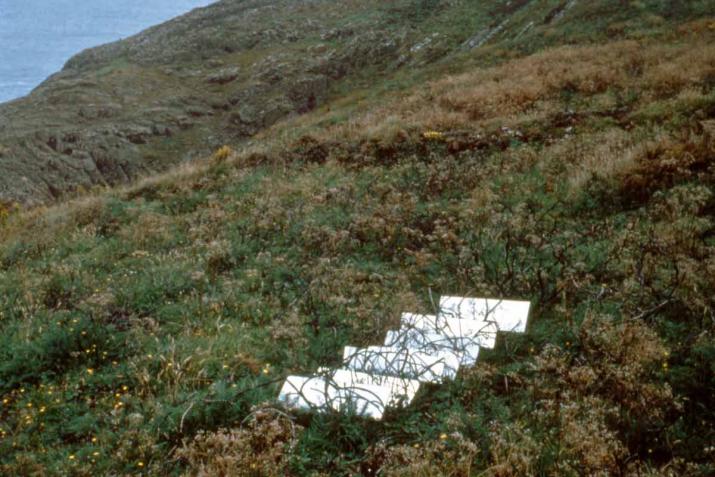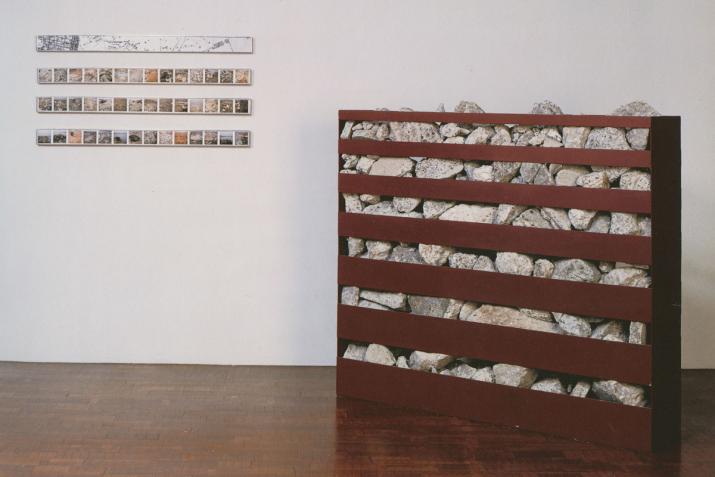
Robert Smithson’s Crystal Lattices: Mapping the Shapes of Time
Rocks and Mirror Square II (1971) is constructed from eight, identically sized mirrors, placed back to back against each other to form a mirrored square shored up with basalt rocks. The granular irregularities of the basalt are juxtaposed against the crisp geometry of the structure as a whole. The mirrors are entirely supported by the rocks. In Robert Smithson’s words, the “pressure of the raw material against the mirrored surface is what provides its stability."1 In melding the deep, geological time of the Earth with what Smithson thought of as the timelessness of mirrors, a complex temporal dialectic emerges.



